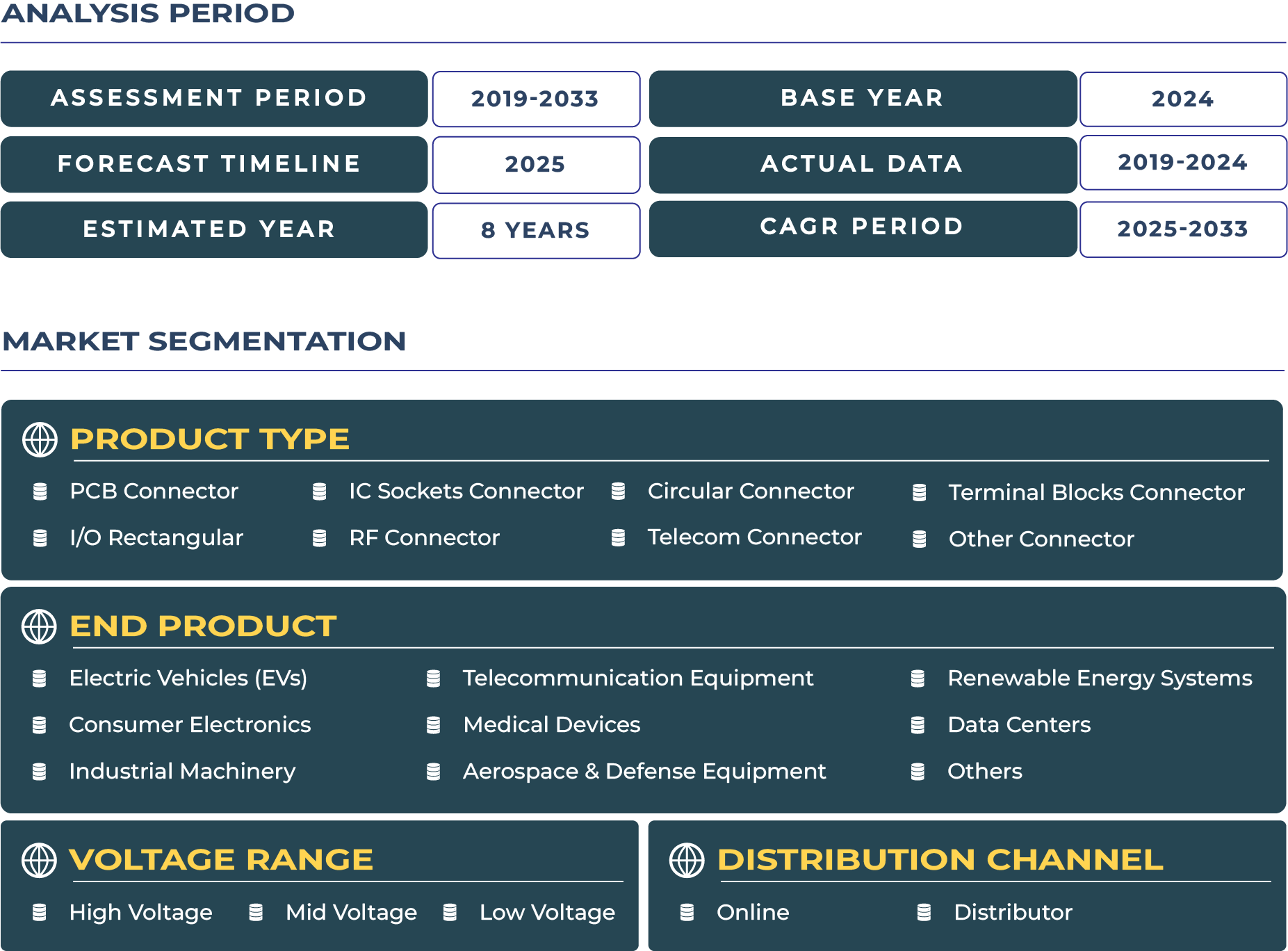Thailand Connector Market Outlook
Advanced High-Frequency Connectors Powering Thailand’s Robotics & Defense Leap
Thailand is undergoing a strategic shift in its connector ecosystem, moving swiftly toward high-frequency, sensor-integrated, and diagnostic-capable modules that serve its expanding defense, aerospace, and industrial robotics sectors. As one of Southeast Asia’s manufacturing hubs, Thailand is emphasizing connectors that support EMI compliance, real-time monitoring, and mission-critical applications—a transformation reflected in an estimated connector market value of USD 840 million by 2033, growing at a CAGR of 6.1%. This surge is driven by the need for robust, high-frequency solutions to support rapid automation and defense modernization. Enhanced reliability and regulatory demands are propelling investment in next-gen connector technologies across key Thai industries.
Catalyzing Thailand’s High-Tech Surge Through Smart, High-Frequency Connectors
The intersection of robotics and defense is fueling demand for connectors that can reliably transmit high-frequency signals while integrating diagnostic features. Thailand’s Eastern Economic Corridor (EEC) development initiative, backed by both domestic and Japanese investments, includes modernization projects in aviation, logistics, and defense electronics. As boundary-pushing aerial drones, ground vehicles, and portable radar systems become commonplace, the demand for RF, circular, and telecom connectors with sensing capabilities has surged.
Robotics, Defense Upgrades – Compliance and Counterfeiting Threats
Industrial automation and robotics adoption remain primary growth drivers. The Thai-German Institute’s robotics facility in Chonburi has doubled its automation throughput since 2022, increasing PCB connector use in robotics control systems. Defense modernization—encompassing UAV systems and secure comms—further demands high-frequency, shielded RF and circular connectors.
Yet, the market faces challenges. Achieving stringent EMI compliance is essential but brings added design complexity and cost. Product trials in 2024 indicated up to 15% failure rates in non-compliant connector batches. Additionally, Thailand grapples with counterfeit connector imports, particularly from informal electronics markets, undermining trust and complicating supplier vetting processes.







